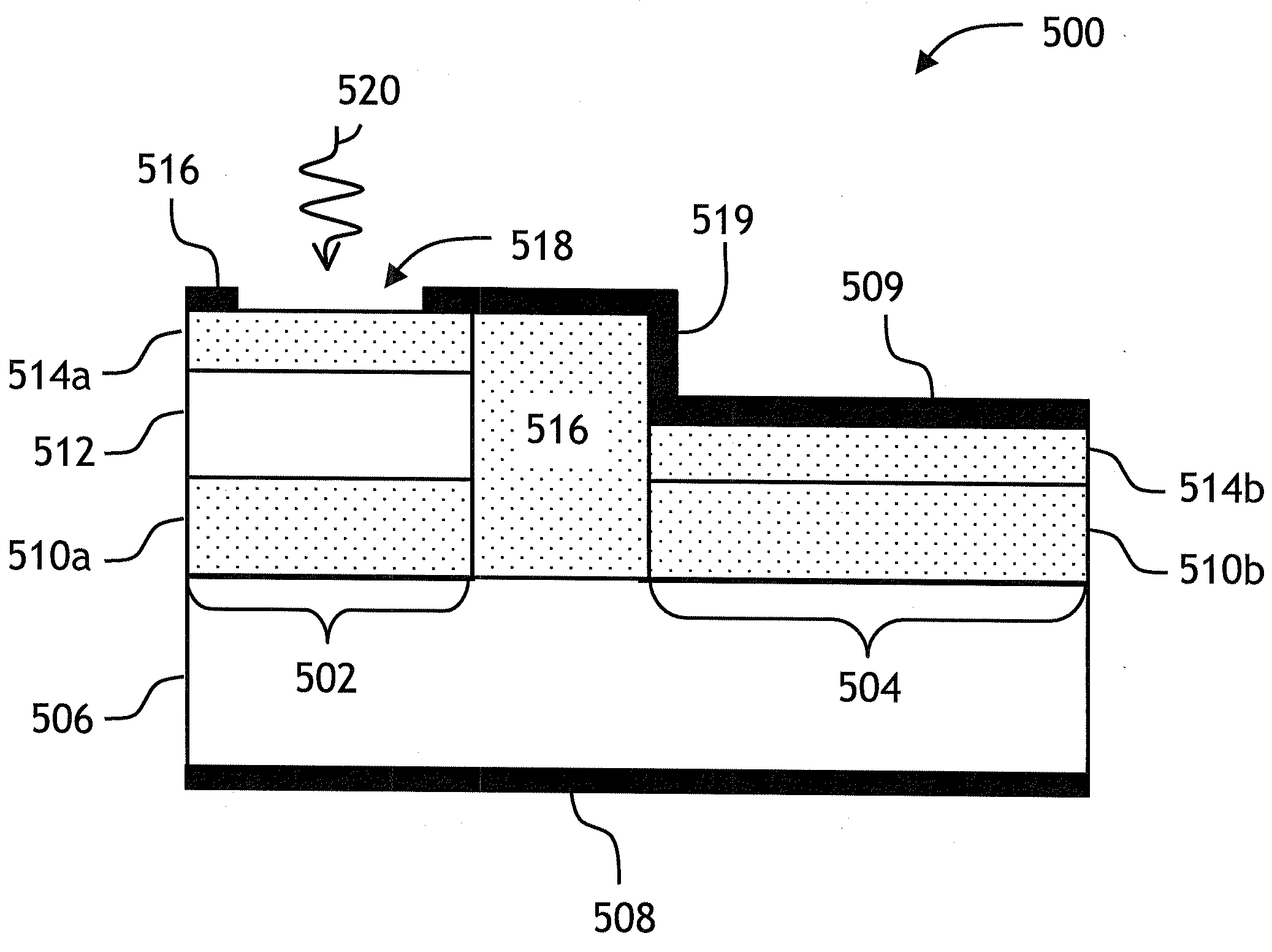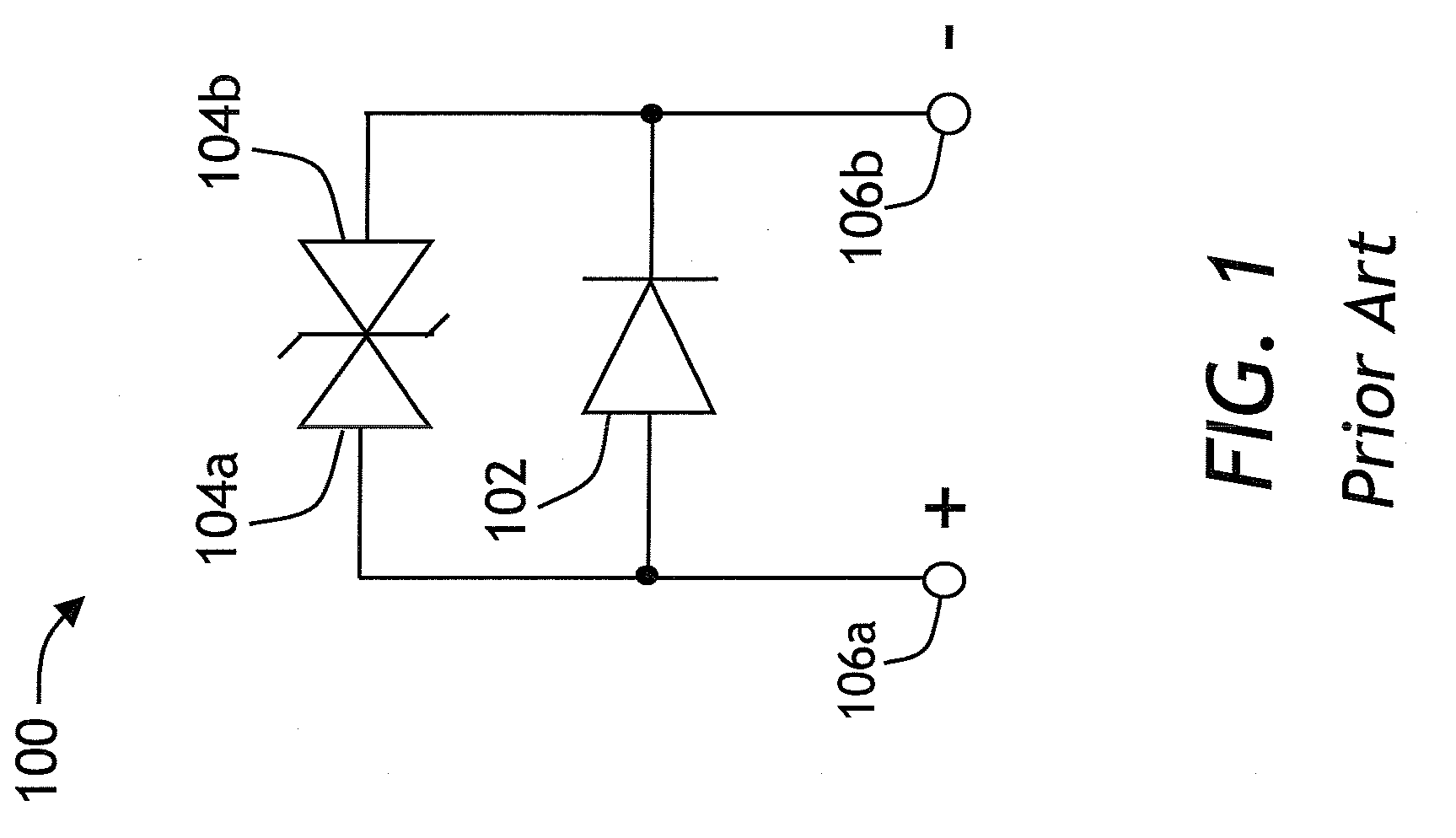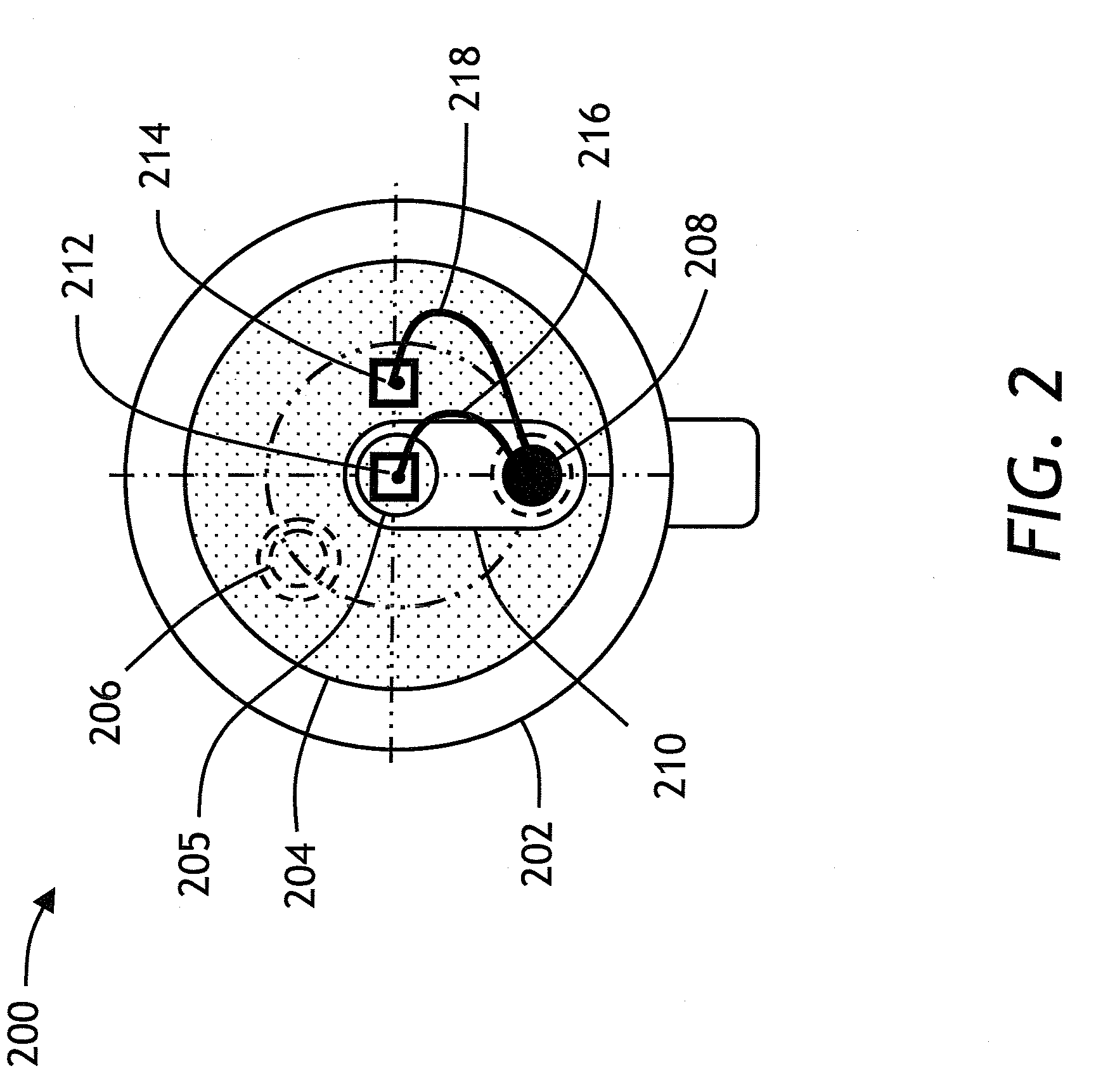Photodiode Assembly With Improved Electrostatic Discharge Damage Threshold
a photodiode and electrostatic discharge technology, applied in the field of photodiodes, can solve the problems of photodiodes and other sensitive electronic devices, easy damage to commercially available photodiodes, and fast electric transients of a few thousand volts
- Summary
- Abstract
- Description
- Claims
- Application Information
AI Technical Summary
Problems solved by technology
Method used
Image
Examples
Embodiment Construction
[0024]While the present teachings are described in conjunction with various embodiments and examples, it is not intended that the present teachings be limited to such embodiments. On the contrary, the present teachings encompass various alternatives, modifications and equivalents, as will be appreciated by those of skill in the art.
[0025]FIG. 1 shows a prior art protection circuit 100 for a light emitting diode, or LED 102, comprising a pair of Zener diodes 104a and 104b connected in parallel to LED 102. In operation, a voltage is applied to electrodes 106a and 106b so as to make LED 102 emit light. Since Zener diodes 104a and 104b are connected cathode-to-cathode, they exhibit high electric resistance and, therefore, in operation, almost all of the electric current flows through LED 102. When an ESD pulse of either polarity arrives, the Zener diodes 104a and 104b conduct, short-circuiting the path of electric current and protecting LED 102.
[0026]Turning now to FIG. 2, a top view of...
PUM
 Login to View More
Login to View More Abstract
Description
Claims
Application Information
 Login to View More
Login to View More - R&D
- Intellectual Property
- Life Sciences
- Materials
- Tech Scout
- Unparalleled Data Quality
- Higher Quality Content
- 60% Fewer Hallucinations
Browse by: Latest US Patents, China's latest patents, Technical Efficacy Thesaurus, Application Domain, Technology Topic, Popular Technical Reports.
© 2025 PatSnap. All rights reserved.Legal|Privacy policy|Modern Slavery Act Transparency Statement|Sitemap|About US| Contact US: help@patsnap.com



